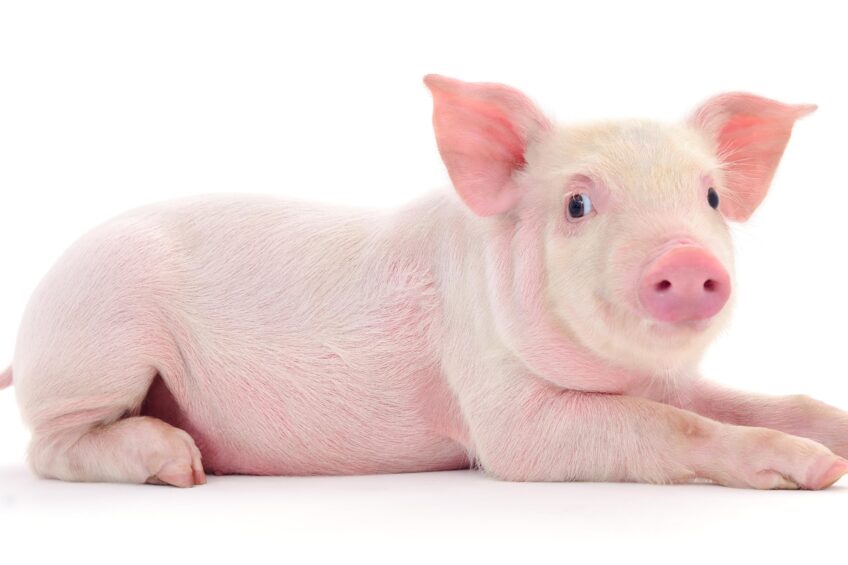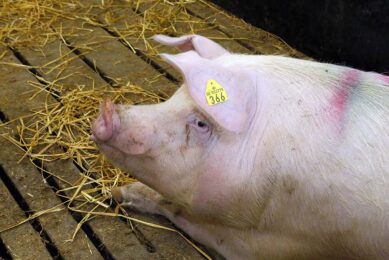What’s next for pigs’ tails?

Keeping the tails of pigs whole is still a challenge in 2021. How do we adress the challenge of tail biting in pig production amidst rising animal welfare concerns and the economic losses related to this challenge?
Indeed, as the risk of tail biting is high, most European countries still practise tail docking. Moreover, the economic and welfare consequences of tail biting are important.
A recent study conducted by Niemi et al. reports that the economic loss is as high as € 2.30 per slaughtered pig (about 1.6% of carcass value) at just 10% of tail biting lesions. Besides the cost, tail biting is very difficult to predict as the risk factors are numerous and variable. Moreover, once tail biting begins, it is very hard to stop.
Despite these difficulties, the ban of tail docking is still a big concern for producers and researchers as social pressure and welfare interest increase. So, what are the solutions? Are all countries equally challenged?
Tail docking: a routine practise
Since 1994, legislation has banned the routine tail docking of piglets in Europe. The legislation has been amended several times and was substantially updated by the directive 120/2008/EC. Despite that, tail docking is still tolerated as it decreases tail biting, and the acute welfare risk induced by tail docking appears to be much lower than the welfare risk of tail biting outbreaks. In Europe, only Finland and Sweden have completely banned tail docking (since 2003) and have established additional, specific measures, including the following:
- Providing enrichment materials (straw).
- Ensuring good air quality and a comfortable temperature.
- Providing enough space (0.9 sqm/pig at fattening stage and no complete slatted floor).
- Optimal feeding conditions.
These countries can raise pigs with their tails intact. It is also important to note that in Finland, pork price fluctuations are lower than in other European countries, allowing farmers more margin to invest in their farms and facilities.
What about other countries? In 2019, Germany initiated a national action plan named ‘Kupierverzicht’ where specific management to control risk factors were evaluated. Farmers adopting this approach received an additional gain per whole-tail pig produced. In 2019, it represented 1.5% of the total number of pigs produced. No specific plan with rewards has been set in France and Spain, but we observe that more and more farmers are trying to keep whole tails.
Why do pigs bite in the first place?
This may seem like an easy question to answer, but this is not the case. Tail biting, like the other destructive behaviours (e.g., sows chewing the bar), are stress symptoms. In 1925, Hans Selye, a medical doctor, was the first man to discuss stress, which he defined as a non-specific response of the body to any demand. In this regard, ‘demand’ relates to stressors and ‘response’ to General Adaptation Syndromes (Figure 1), which have 3 stages (Selye., 1950):
- Alarm reaction
- Resistance
- Exhaustion
The alarm reaction follows immediately after the stressor, and animals will either flee or fight. If there is enough space, the animals can run away; if not, they will have to fight. The problem appears when the animals are not able to adapt. If the pigs settle, some will experience the third stage – exhaustion – at which point the animal reaches a ‘breaking point’. This is when we could start to observe specific behaviour, such as tail biting. This will further increase the stress level of the bitten pigs, causing them to also experience exhaustion. With this analysis of the stress response, we understand that 2 parameters are involved in the control of tail biting: the control of the external stressors and the pig’s resistance capacity.
Figure 1: General Adaptation Syndrome (Selye, 1925)

The 3 types of tail biting
There are 3 types of tail biting described by the FAWEC (Spain). Since pigs are animals with foraging behaviour, the first type is known as ‘2-stage tail biting’ and refers to behaviour that does not cause damage. In the second type, known as ‘sudden forceful tail biting’, the pig’s tail is bitten vigorously without a clear prior period of gentle manipulation. Here, the pigs are at the beginning of the exhaustion stage. The last type is described as ‘obsessive tail biting’, whereby big biters are at an advanced stage of exhaustion. As previously noted, pigs that have reached type 2 and type 3 cannot settle. Therefore, identifying the bitting pig(s) at an earlier stage is key to avoiding an outbreak. A scoring scale is also proposed by IFIP in France to monitor the occurrence of tail biting.
Find the balance between stress and resources
Everyone is aware that there is no silver bullet to end tail biting. Tail docking was practised for a good reason. Nowadays, however, going backwards is not an easy move as the industrialisation of pig production has led to lower welfare standards (higher density, slatted floors and poor environmental enrichments). Keeping pigs with their tails can result from a good balance between external stressors and internal factors (Figure 2).
Figure 2: Risk factors for tail biting

Taking good care of external factors is critical if you want to keep your pigs with their tails. But, the best farmer can still face tail-biting outbreaks because of the animal itself, as sensitivity to stress is an individual parameter. Acting on it is essential to secure your animals.
Reinforcing resilience
Having good human-to-animal and animal-to-animal interaction is important in improving an animal’s capacity to adapt – a familiarised animal will react better and faster to stressors.
The second point is to directly reinforce the resilience of your animal while facing stress. This is possible with a specific neurosensory solution developed by Phodé. Thanks to its cerebral mode of action, it is possible to directly increase the activity of serotoninergic neurons. As a result, the animal’s stress response is faster and better, even in the long term.
In a study conducted at the Prairie Swine Center in Canada on 336 newly-mixed fatteners (D0=day of mixing), aggressive behaviour decreased significantly (mean duration of threats on D1 Control=1.2s vs Trial=0.9s; p<0.001). As a consequence, skin lesions were drastically reduced from the second day after mixing (Figure 3), and the performance of the animals was maintained (Ave. Control FI = 2.45kg/d vs Trial FI 2.53 kg/d; p<0.05).
Figure 3: Mean percentage of pigs with moderate to severe skin lesions

Whatever the legislation, ending tail biting is and will remain a challenge. Having a preventive and global approach to external and internal factors is key to achieving this goal.



